The Complete Guide to Dhyana: Unlocking the 7th Limb of Yoga
Building upon the single-pointed concentration achieved in Dharana, the 6th limb, Dhyana sets the stage for a profound form of meditative absorption.

Introduction
As we traverse the transformative journey of the Eight Limbs of Yoga, delineated in Patanjali’s Yoga Sutras, we find ourselves at an awe-inspiring juncture—the 7th limb, Dhyana.
Translated from Sanskrit, Dhyana may seem synonymous with the term "meditation," but its essence is far richer and more expansive. Building upon the single-pointed concentration achieved in Dharana, the 6th limb, Dhyana sets the stage for a profound form of meditative absorption.
This article aims to delve into the nuanced layers of Dhyana, the gateway to a transcendent state of being.
Why Dhyana Matters
Elevation of consciousness.
Dhyana allows us to go beyond the limitations of our physical and mental faculties. Through its practice, we gain access to elevated states of consciousness that facilitate self-realization and deeper insight into the nature of reality.
This heightened awareness can often translate into a sense of deep-rooted inner peace, clarity, and wisdom. This can enrich both our internal and external experiences of life.
Psychological Resilience
In an increasingly chaotic world, the mental stability achieved through the practice of Dhyana proves invaluable. Studies have shown that sustained meditation practice can lead to tangible psychological benefits, including reduced stress levels, decreased symptoms of anxiety and depression, and improved emotional well-being.
Holistic Health
Beyond its mental health benefits, Dhyana supports holistic well-being by creating a synergy between the mind and body. This interconnectedness has been shown to reduce cortisol levels, enhance immune function, and even bring about improvements in chronic conditions like hypertension.
What Sets Dhyana Apart
Spontaneity and flow.
While Dharana involves a deliberate, focused form of concentration, Dhyana represents an effortless state where the mind naturally stays on one point of focus or expands to become all-encompassing. This state is often described as "flow," where you lose yourself in the experience, free from the shackles of ego and temporal concerns.
Objectivity and Non-Attachment
Dhyana enables us to detach from our own thoughts and feelings, thus cultivating a sense of objectivity. In this heightened state, one merely observes thoughts and sensations without any form of emotional engagement, be it attachment or aversion. This brings us closer to understanding our true nature, uncolored by personal biases or societal conditioning.
Absorption and Unity
Perhaps the most sublime aspect of Dhyana is the sense of unity and absorption it engenders. In Dhyana, the separation between the meditator, the process of meditation, and the object of focus dissolves. What remains is a unified field of pure consciousness, transcending the usual demarcations of subject and object.
Techniques for Practicing Dhyana
Evolution from dharana.
One common pathway into Dhyana is through the practice of Dharana. Starting with a single-pointed focus, allow your concentration to become increasingly effortless until it evolves into a spontaneous flow, signifying the transition into Dhyana.
Mindfulness-Based Approaches
Mindfulness meditation, often associated with Vipassana, can also serve as a gateway to Dhyana. Here, the focus isn't on a single object but rather on the present moment. Observing your thoughts, feelings, and sensations without judgment helps facilitate a smooth transition into a Dhyana state.
Compassion Meditations
Metta or Loving-Kindness Meditation begins by directing compassion towards oneself and then expanding it outwards. This continuous, flowing extension of positive energy can often lead to a state of Dhyana.
Mantra-Based Methods
Repeating a specific mantra can help in creating a meditative state conducive to Dhyana. What begins as an act of verbal or mental repetition can eventually lead to a state where the mantra resonates effortlessly within, guiding you into Dhyana.
Advanced Practices for Deepening Dhyana
Yoga Nidra, or "yogic sleep," is a form of guided meditation that brings about a state of conscious relaxation. While not Dhyana in the traditional sense, the deep relaxation and heightened awareness it induces can be a segue into Dhyana.
Vipassana and Insight Meditation
For those looking to deepen their practice, Vipassana or Insight Meditation offers a methodical approach to observing the mind and body, eventually leading to profound states of meditative absorption akin to Dhyana.
Dhyana, the 7th limb of yoga, is a powerful realm that transcends the mere act of meditation. It serves as both a journey and a destination, a state where the mind is simultaneously fully alert and profoundly at peace.
This confluence of heightened awareness, emotional equilibrium, and holistic well-being marks Dhyana as one of the most transformative aspects of the yogic path.
Embarking on the practice of Dhyana not only enriches your yoga journey but also brings a profound sense of clarity and unity to all facets of life.
As you progress in your exploration of Dhyana, you come to realize that this practice is not a solitary island but rather a bridge to the ultimate goal of yoga—Samadhi, or spiritual liberation.
Yoga's Secret Power: Enhancing Cognitive Function in Cancer Patients
The ultimate lizard pose (utthan pristhasana) guide: from beginner to advanced, unlock the secrets of tree pose (vrksasana) for better balance.
Your cart is empty

30 days of FREE meditation in the Chopra App
in honor of Mental Health Awareness Month
50% OFF all self-care essentials | Discount applied in cart
Dhyana: The Seventh Limb of Yoga
The journey of meditation, between meditation and dhyana, through your meditation you can reach dhyana, as you strengthen your yoga and meditation practice you may find yourself wanting to take it to the next level. becoming a certified instructor can open the doors to finding greater peace and fulfillment as you teach these life changing practices to others. click here to learn more., related articles, yoga for seasonal harmony, yogic practices to feel balanced heading into autumn, a yoga practice for strength and resilience, bring balance to your inbox.
We’ll send you content you’ll want to read—and put to use. By submitting, I consent to Chopra, and its affiliates contacting me by email at the address provided and/or by telephone at the number provided (by live, automated, or prerecorded phone calls or text messages) about its products and services.
Recommended Products
Ritual care kit, renew & restore detox kit, chopra ayurvedic body oil trio, ground + nourish ayurvedic body oil, soothe + refresh ayurvedic body oil, revive + rejuvenate ayurvedic body oil, clarity & serenity tinctures, fiber bundle, ritual care journal.
- Choosing a selection results in a full page refresh.
- Opens in a new window.
Dhyana Explained – The Ultimate Meditative Stage
- In Yoga Sutra
- Dharana to Dhyana
- How to Practice?
- Benefits of it
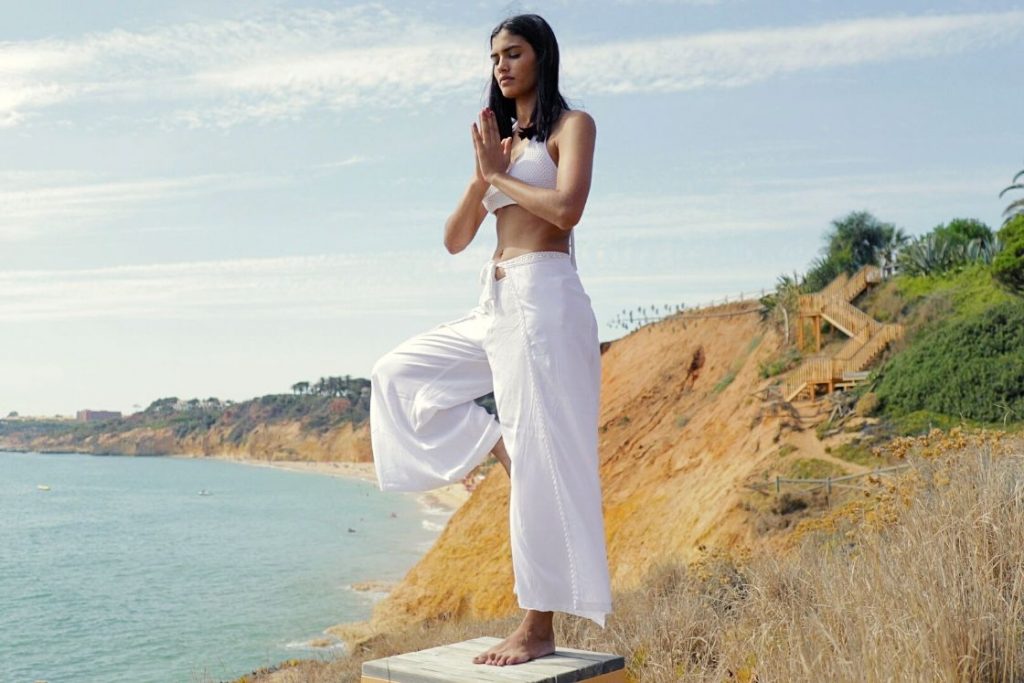
Imagine yourself admiring a very beautiful waterfall. You are observing every little detail of the flowing water, its color, solid white froth, heart-stimulating sound as it is rushing towards the ground, gathering each feature in your mind as you adore its presence.
Here, you are so concentrated on admiring these aspects of a gorgeous waterfall that you forget your surroundings. You are just so lost in the waterfall that you feel disconnected from your material conditions or physical awareness.
Mudras: The Yoga of The Hands
Know mudras for various health conditions and wellness
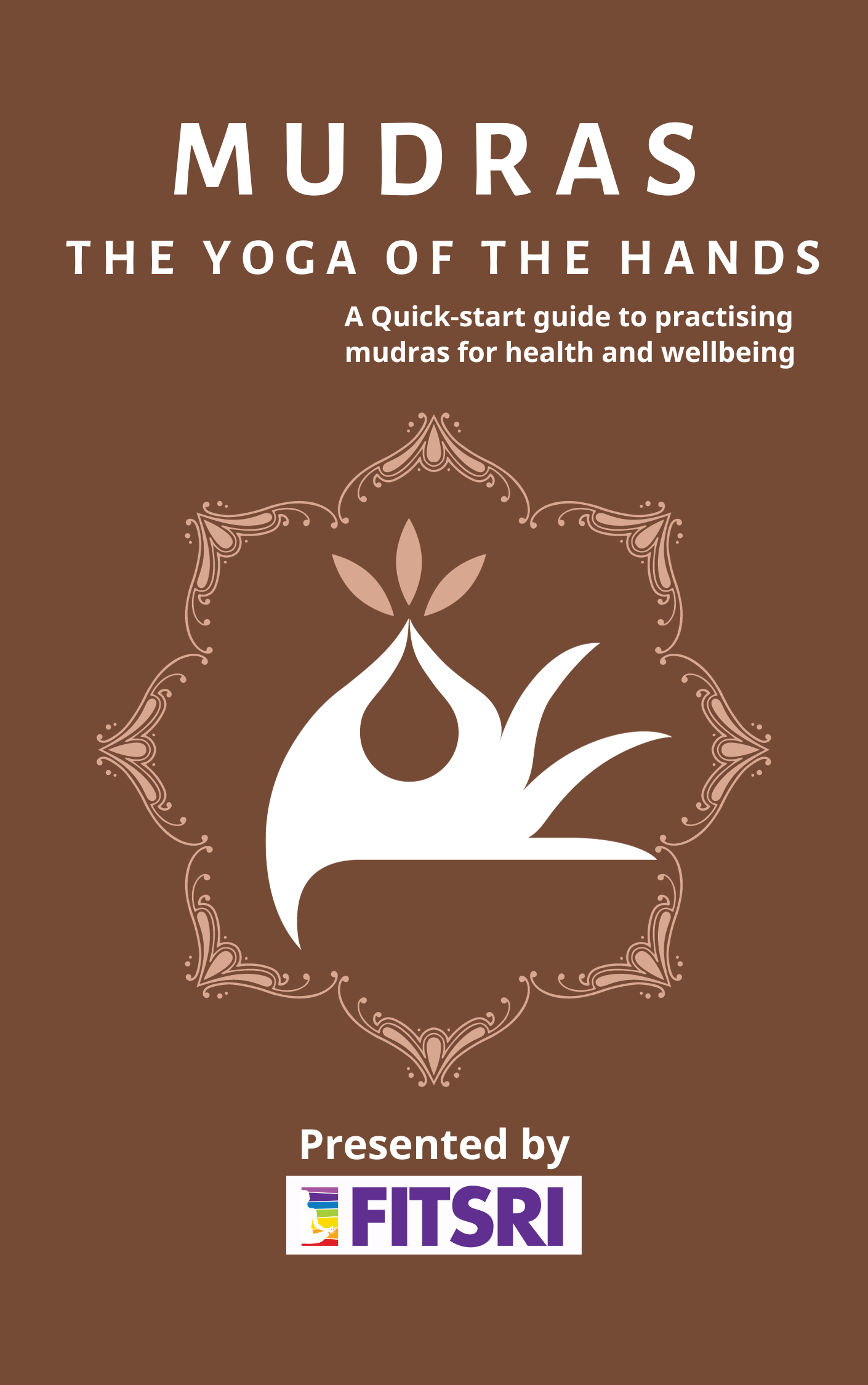
This is exactly the state of Dhyana – a stage of deeper concentration where your awareness is only flowing towards the one object of perception. You have absolutely engrossed in your current state that the outer reality is untrue. What exists is only that pure awareness flow between you and the beautiful waterfall.
What is Dhyana?
The word Dhyana is generally translated as meditation. Often it is used to mean concentration or focus. But the meaning of the word lies in the deeper concepts. In Sanskrit, Dhyana is broken down as dhi, meaning mind and yana, meaning flowing or moving.
Hence, one explanation of the word Dhyana can come as ‘the uninterrupted flowing state of mind’. Here, flow is towards the object or idea of meditation. The Dhyana state, thus, is a state of uninterrupted flow in connection with the object that a person is meditating upon.
As the word flow itself characterizes continuity and steadiness, so does the state of Dhyana. The person is absorbed in the connection that he forms with the object of meditation and loses his sensory feel.
One more way to explain Dhyana comes from the root word ‘ Dhyayi’, which means ‘to think of’. In this sense, Dhyana is the state of mind that requires deep mental thinking or concentration. However, we must keep in mind that this level of mental depth can only be attained through intense elemental practices.
The 7th limb of yoga
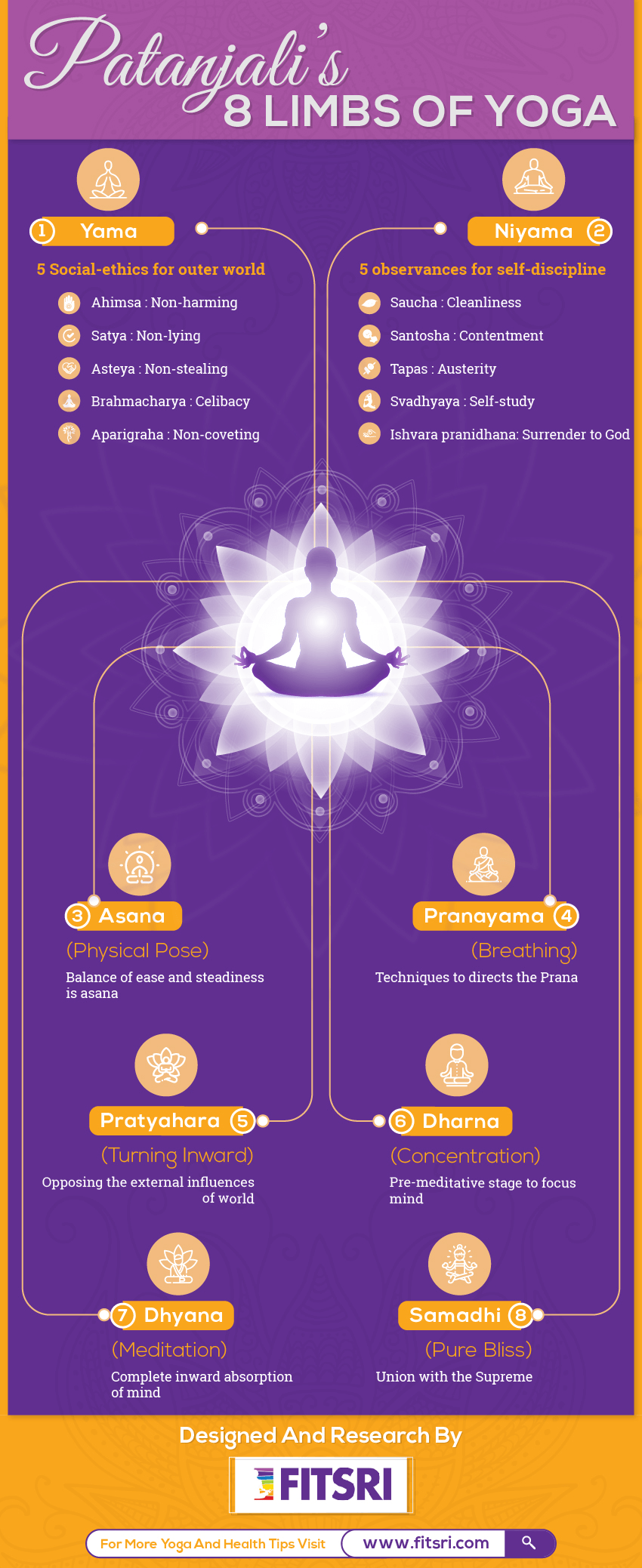
Maharshi Patanjali describes Dhyana is the seventh limb of Yoga . It’s the second last stage of reaching Samadhi ; the highest state of yoga. The first six limbs act as the essential practice that cultivates awareness in order to achieve the state of Dhyana.
In short, Dhyana cannot be reached as a stand-alone exercise. It can only come when it is backed by the deep practice of the preceding 6 limbs.
- Yamas – The first limb is the practice of 5 social disciplines to develop a positive attitude towards things in our surroundings.
- Niyamas – The second limb is the practice of 5 personal disciplines.
- Asana – The third limb is the practice of cultivating awareness of the body.
- Pranayama – The fourth limb is the practice of partially controlling the mind via breath.
- Pratyahara – The fifth limb is the practice of inwarding the awareness to focus on inner-self.
- Dharana – The sixth limb is the exercise to develop concentration.
Observe how each preceding limb is directing us one step closer to Dhyana.
Dhyana according to Patanjali
The Yogasutras describe Dhyana as, “ Tatra Pratyaya Ekatanata Dhyanam” means where there is a base of continuous, uninterrupted contemplation, is the stage of Dhyana. ‘There’ is indicated as a place, object, or idea of meditation.
It can thus be elaborated as a continuous flow of the mind toward the object of meditation. As a result of this flow, a connection forms between the meditator and the object of meditation.
When this uninterrupted link is formed between the both, the meditator loses his touch with the sensory aspects. The only active part that remains is his mind. And the mental activity that occurs in the meditator’s mind is only in connection to the object he is meditating on.
Dhyana builds up when a meditator progresses in the previous stages of Yoga. After regulating the body, breath, senses, and practising concentration, he reaches a state of deeper levels of meditation where he is connected to the object and nothing else.
In this state, the meditator is absolutely immersed in the process of meditation itself that he cannot see himself and the object separately.
The Flow from Dharana to Dhyana
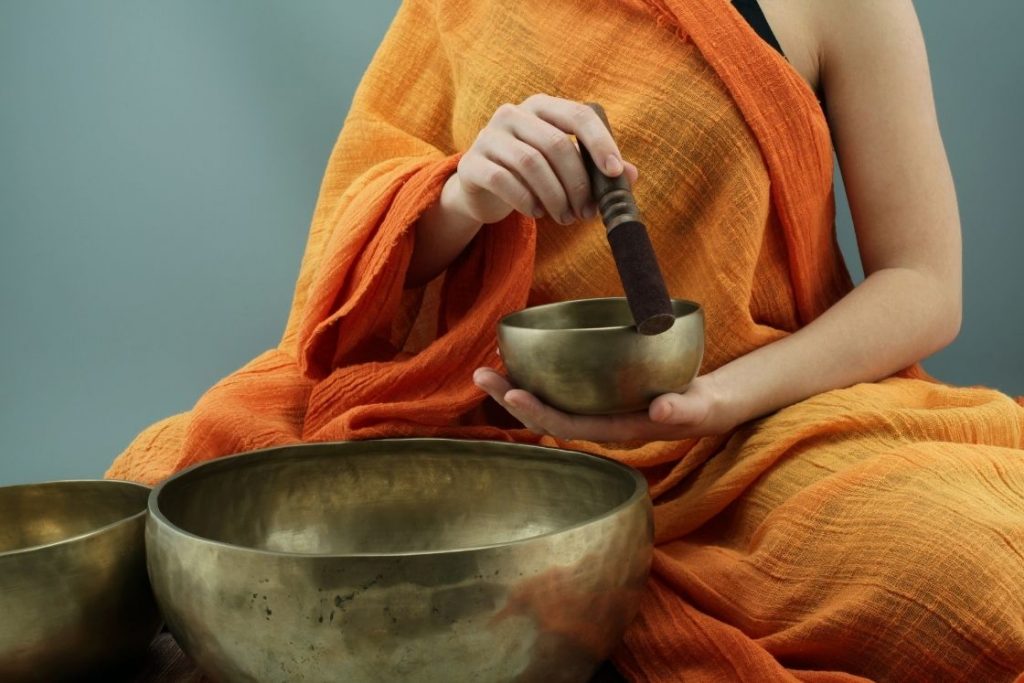
The transition from Dharana to Dhyana is very subtle but it acts as an important shift in perspective and practice.
Dharana is the act of focusing on an object, idea or thought; it’s called active focusing where we put mental effort to keep our attention unscattered. We can’t keep focus unscattered for a longer duration when there is effort working in the process.
When we are able to hold the mind for a longer duration, or Dharana is maintained for a longer time, in a continuous manner without any interruption, that state of mind is called Dhyana.
We must understand this, Dharana is the act of focusing and Dhyana is a state of mind which we discover by consistent concentration practice.
When you are asked to focus on your breath, you struggle with a lot many things. You can feel cold or your mind might wander. You have to bring the mind back to focusing on one point that is your breath. This is the Dharana stage, where your mind is on single-pointed attention.
When this attention is established without any distraction, the meditator transits to the Dhyana stage. He experiences Dhyana when the mind wanders nowhere or is disturbed by nothing and a continual flow is established between the object and himself.
In Dhyana, the person loses all his attachments and breaks his connections with the sensory world of past and present. In all the previous meditative stages like Dharana, the person seems to transcend himself to higher and higher stages and seem lifeless. Whereas in Dhyana, the person is said to be aware of, not his senses, but only his current state of being.
How to Practice Dhyana?
One factor we must keep in mind is that Dhyana is the seventh limb of Ashtanga Yoga and for the same, a person seeking enlightenment through Yoga is required to have accomplished the previous stages.
The stage of Dhyana can be achieved when the person is performing all the Yamas, Niyamas, doing regular practice of Asanas, Pranayama, and Pratyahara.
Here are some ways you can practice Dhyana;
1. Observe your Breath
Focusing on your breathing is the key factor to practice Dhyana. Breathing exercise is the essential practice that you have to perform if you wish to achieve steadiness of the body and calmness of the mind. Observing the breath means to deep breathe while concentrating your mind solely on your inhalation and exhalation.
For dhyana yoga, you can do slow and deep yoga breathing exercises like alternate-nostril breathing (Anulom-Vilom) and Bhramari Pranayama . When doing these pranayamas, firstly connect with the natural cycles of your breath and bring your awareness to it. Then slowly shift the breathing pattern to specific pranayama.
2. Practice Vairagya ( detachment)
Dhyana is said to be the practice of Vairagya (detachment) . When the person sits for Dhyana, he is required to feel detached from not just his senses but also his memories and belongingness.
Performing trataka or flame-gazing exercise is a good way if you want to delve into the Dhyana. It reflects the person’s transition from Dharana to Dhyana. Deep gazing at the flame develops intense concentration and acts as a foundation for Dhyana.
The benefits of these exercises are that they will help you gain control over your restless and thoughtful mind. They will also support you in bringing your focus to one place and form a connection with that one place. As a result, you find yourself more balanced, both physically and mentally.
3. Maintain Steady Physical Postures
You have to stay steady or hold your meditative posture for a long time when you are performing Dhyana. The meditative postures require stillness as also explained by Patanjali as Sthiram Sukham Aasanam. It means one has to maintain steadiness to get the best benefits out of the postures. This comes when you practice the Asana stage honestly.
Performing different asanas, especially the balancing asanas like Vrikshasana (tree pose), Utkatasana (chair pose), Tadasana (mountain pose) and meditative postures like Padmasana (lotus pose), Ardhapadmasana (half lotus pose), Vajrasana (thunderbolt pose) will enhance your steadiness.
The practices of body and mind stillness as reflected in Asana and Pranayama stage ensure your steadiness in the stage of Dhyana.
4. Practice Stillness
Dhyana is the deepest level of meditation where you are aware of only your state of being. To experience such a consciousness requires incredible stillness. Thus, it is important to sit still, close your eyes, and contemplate on your yogic journey.
Pranayama aids you in this. Also, to stay still, it is important to withdraw from the senses and turn your attention inward. Hence, Pratyahara is necessary.
5. Patience and Practice
The state of Dhyana should not be misunderstood in terms of its occurrence. It does not immediately come as soon as you close your eyes. As we saw earlier, it requires a great deal of practice of the first six limbs of Yoga namely Yamas, Niyamas, Asanas, Pranayama, Pratyahara, and Dharana.
There can arise many problems when we sit in the resolution for Dhyana. But a person must overcome them with patience and continue to practice Dhyana. If you are desperate to reach the state, it will only put you back to the start of the ladder. Without forcing on the mind, reaching to the state of stable connection between you and your object of motivation is Dhyana.
Hence, patience and practice are the key factors if you want Dhyana to be a regular part of your yogic routine.
Benefits of Dhyana Practice
As with any deep meditation practice, Dhyana offers a wide range of mental as well as physical benefits. The very first thing Dhyana does for us is the expansion of awareness. It builds our self-awareness to the point where we become aware of our present state in its entirety.
Regular practice of Dhyana yoga has its effects on keeping our stress levels under control. As the breath becomes slower, the mind also maintains its balance and avoids unnecessary speeding up. Thus, Dhyana is a suggested practice for those who have excessive anxiety and tension.
It helps one get rid of impulsive behavior, unwanted thoughts and emotions. Moreover, it treats sleep problems like insomnia.
When you are quiet from within, you develop a tendency to empathize and love others more. Dhyana helps build social and spiritual relationships.
There are a few physiological benefits of Dhyana too. Continuous practice leads to the maintenance of natural homeostasis in the body. By performing regular Dhyana, the body learns to calm its systems sooner after a stressful event. When the body’s tendency to cool down increases, homeostasis is maintained.
Dhyana practice can relieve headaches, muscle and joint pains. It is recommended for people who suffer from chronic pain. It is said that the perception of pain largely depends on the person’s state of mind. Dhyana balances the mind by expanding its purpose. Hence, the person feels relieved from the sensory troubles.
As the practice of Dhyana becomes regular, the person understands the difference between the world that he sees and the world he has within himself. This realization helps him to be more attentive to what really matters, detaching himself from the material world.
Final Thoughts
The prerequisites of Dhyana are the first six limbs of Yoga and the climax of Dhyana is Samadhi. Eventually, when the person is stabilized in Dhyana, he is ready to meet the reality beyond his sensory world. When the deeper levels of consciousness are revealed, the person creates the setting for self-absorption.
Dhyana will not only make you more aware of your own true self but will also create a foundation for absorption into the Supreme Reality. To reach this stage, to begin is important. Beginning your yogic journey through these limbs of Yoga is a challenging but worth-achieving goal.
Related Posts
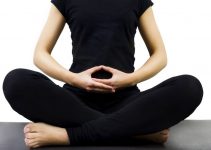
Meditation Positions: How to Sit Properly for Meditation?

What is Mantra Yoga? Benefits and Types of Mantra Chanting
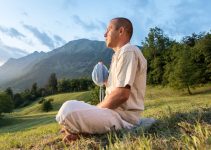
6 Essential Meditation Tools to Deepen Your Practice
About the author.
Ashish is a certified Yoga Teacher having experience of teaching at various schools in India. He started learning yoga from renowned yoga schools in the world capital of yoga, Rishikesh. Through his teaching, he realized how Yoga & Ayurveda can be used to increase the longevity and wellness of one's life.
Leave a Reply Cancel Reply
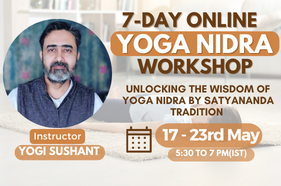
Dhyana Yoga Journey

Location & Hours
Suggest an edit
Plano, TX 75025
You Might Also Consider

Breath Sanctuary
10.6 miles away from Dhyana Yoga Journey
Discover a new level of wellness with our expertly administered bodywork and integrative health practices. read more
in Alternative Medicine

4 the Spectrum Prep
2.1 miles away from Dhyana Yoga Journey
We are a trusted and highly rated family owned ABA center for over 17 years. We provide personalized guidance to our families and help learners with Autism Spectrum Disorders attain a better quality of life and a love for learning.… read more
in Counseling & Mental Health, Behavior Analysts

Sexual Wellness Centers of America
Offering the only globally patented treatment option to reverse Erectile Dysfunction with over 97% success! No pills, no surgery! read more
in Weight Loss Centers
Amenities and More
About the business.
Traditional (alignment and breath based) Yoga, Hatha Yoga, Yoga Teacher Training, Yin Yoga, Restorative Yoga, Yoga Nidra, Chakras, Spirituality, Meditation, Mantras and Chants. …
Ask the Community
Ask a question
Yelp users haven’t asked any questions yet about Dhyana Yoga Journey .
Recommended Reviews
- 1 star rating Not good
- 2 star rating Could’ve been better
- 3 star rating OK
- 4 star rating Good
- 5 star rating Great
Select your rating
Overall rating

I took my 200 RYT training at Dhyana. My teachers Anju and Peggy were amazing! I LOVED this class and miss it terribly now that it is complete & I am a certified teacher. They cover not only the technicalities of the poses but also the other areas of yoga so often overlooked by western teachers. I learned about Sanskrit, the Gita, Ayurveda, meditation and more. I will definitely be coming back again to take further training at this center. The center itself has an amazing relaxing vibe that helps the knowledge soak in too.
Best place to practice Yoga, the teachers are very knowledgeable and they teach with love and compassion. Ambience is quite, seren and just beautiful and peaceful. I received my yoga teacher training here and it is the best. If anyone is looking to practice yoga and a teacher training program, don't look anywhere go to Dhyana yoga center. I live 40 miles away from the center, though the commute was a pain at times but I never felt tired or dragged myself because I looked forward to coming here. It was all worth it for me. I wish I lived closer to this center so I could go practice there but I live 40 miles away.
6 other reviews that are not currently recommended

Bindaas Bollywood
Fitness based dance classes. Come and have fun dancing with us and get your cardio. Classes are offered in Coppell and Frisco locations. read more
in Dance Studios, Yoga, Trainers

Samaritan’s Well
9.4 miles away from Dhyana Yoga Journey
Equipping You to Rekindle the Love in Your Marriage. Samaritans Well is celebrating 20 years of counseling couples in the North Texas area. We help you with relationship challenges, after trauma, after big life changes, during the… read more
in Counseling & Mental Health
People Also Viewed

The Alchemy Yoga

Gaia Flow Yoga - Plano

Honor Yoga Plano

Dallas Meditation Center

Yoga on Main

Horizon Hot Yoga

Plano Meditation

Uptown Yoga

SunstoneFIT - Centre at Preston Ridge

Yoga Chikitsa
Best of Plano
Things to do in Plano
Browse Nearby
Restaurants
Things to Do
Other Places Nearby
Find more Ayurveda near Dhyana Yoga Journey
Find more Meditation Centers near Dhyana Yoga Journey
Find more Yoga near Dhyana Yoga Journey

- Preferences
- Your Classes
- Your Playlists
- Your Programs
- Account Settings
- Give the gift of yoga
- Redeem gift card
Dhyana – a meditative state of being
The practice of dhyana - the seventh of the eight limbs of yoga - brings about keen awareness without focus and moves us from a state of doing to being….

Learn more about this limb in Esther’s talk…
Concentration and contemplation
Although Dhyana sounds and seems similar to Dharana (the preceding limb of the Eight Limbs of Yoga ), it is subtly different. While Dharana teaches us a one-pointed focus, encouraging us to concentrate all of our attention onto the breath, or a sound, or a visualisation, Dhyana brings about keen awareness without the focus.
So while Dharana requires us to concentrate on one object, Dhyana teaches us to observe it without judgement, without attachment – instead contemplating it in all its colours and forms in a profound, abstract state of meditation.
Dhyana teaches us to observe something without judgement, or attachment – instead contemplating it in all its colours and forms in a profound, abstract state of meditation.
Judith Lasater uses a beautiful analogy of rain to make the distinction between concentration (Dharana) and contemplation or meditation (Dhyana). Distinct raindrops represent intermittent moments of focused attention (Dharana). However, when these individual raindrops fall to earth and merge they create a river which represents Dhyana, an uninterrupted flow:
The separate raindrops merge into one continuous flow, just as individual moments of Dharana merge into the uninterrupted focus of meditation. In English, we often use the word “meditate” to mean “to think,” but in yoga, meditation is not thinking; instead, it is a deep sense of unity with an object or activity.
Blurring the line
Therefore, instead of meditation being something you actively DO, it becomes a state of being. The line between what you’re doing (breathing / repeating a mantra / using a light visualisation) becomes blurred and the separation between you and whatever it is you’re focusing on disappears.
Just as the word ‘yoga’ means to ‘yoke’ or ‘ union with, ’ the practice of ‘true’ meditation – the state that’s reached where you forget that you’re ‘meditating’ – during Dhyana our thoughts, emotions and desires subside and our state of doing merges with our state of being…. The subject and object become one.
More on the Eight Limbs of Yoga…
Guided program : for a good grasp of each of the eight limbs through informative talks, yoga, Pranayama and meditation, EkhartYoga members can follow our Eight Limbs of Yoga program.
Further reading : The Eight Limbs of Yogas explained.
Photo by YUCAR FotoGrafik

- Try for free
- Newsletter signup
- Terms and conditions

Dhyana in Yoga – 7th Limb of Yoga Sutras – A Journey of Meditation in Yoga
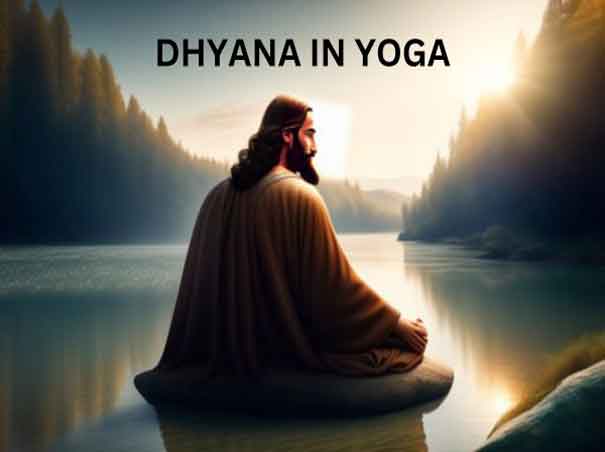
Introduction to Dhyana in Yoga
Yoga is an ancient practice originated in India that helps us feel the best in our body, mind, and soul. Among all the styles of yoga, there is a unique type called Ashtanga Yoga . Ashtanga Yoga refers to the eightfold path of yoga described by the Sage Patanjali. One should follow these steps to align all aspects of life. Of these eight steps, the seventh step is called Dhyana or Meditation, which is essential to develop mindfulness and focus. This article will discuss what is Dhyana in Yoga and how it helps us become more enlightened and peaceful.
Table of Contents
Dhyana, or meditation, is a special part of yoga. It helps to develop mindfulness and focus your mind well. Imagine your mind is like a jumping monkey, constantly moving around and thinking about many things. Dhyana helps calm the monkey mind and make it still and peaceful. When you do Dhyana, you better understand yourself and find peace inside you.
It is like when you sit quietly, and your thoughts become clear, as a calm pond where you can see your reflection. People who practice Dhyana regularly say it makes them feel happier, less stressed, and more connected to the world around them. It is a superpower for your brain that makes you feel amazing.

Understanding Ashtanga Yoga’s 7th Limb- Dhyana
Ashtanga Yoga is similar to a ladder with eight steps. With every step forward, you grow and become more spiritual. The seventh step is called Dhyana or meditation. Dhyana is essential in these eight stages of Patanjali’s Ashtanga Yoga. Before meditation, there is a sixth stage called Dharana , where you learn how to focus your mind. Dharana is a stage just before you start meditating, and it helps you explore deeper inside yourself.
The Meaning and Significance of Dhyana in Yoga
Dhyana comes from the Sanskrit word ‘Dhyai,’ which means to meditate or think deeply. But it is not just a matter of thinking. Meditation is observing your mind, noticing how it runs, and getting good at paying attention. It is becoming so focused that you feel connected to everything around you and understand how everything is related. It is a way of discovering the truth about the world and realizing that everything in the universe is connected.
Role of Dhyana in the Path to Spiritual Enlightenment
In Ashtanga Yoga, there are more important steps before reaching the Dhyana step. These steps are like building blocks to help you become better at yoga.
First come the Yamas and Niyamas, which teach one to be a good and disciplined person. Then, there is Asana, which is entirely about physical postures or Yoga poses. After this, you learn Pranayama , which is controlling your breath. Then comes Pratyahara, which is like shutting down your senses for a while. Before Dhyana, there is Dharana, which is about learning to concentrate your mind. It’s like practicing how to pay attention well. So, all these steps prepare your mind and body for Dhyana, the meditation part of yoga.
- Deepening Self-Connection: Dhyana involves turning the gaze inward. It is a process of deep introspection, where individuals learn to observe their thoughts, emotions, and sensations without attachment or judgment. This introspective journey enables one to go beyond the superficial layers of ego and conditioning, creating a deeper connection with one’s true self.
- Transcending the Ego: The ego is one of the primary obstacles to spiritual enlightenment. Ego creates a false sense of separation between the individual and the universe. Dhyana allows practitioners to go beyond the ego by realizing that the self is not separate from the whole. This dissolution of the boundaries of the ego is an essential step towards spiritual liberation.
- Realizing Interconnectedness: Through Dhyana, individuals experience a heightened sense of interconnectedness with all beings and the cosmos. This realization goes beyond intellectual understanding and becomes a deep awareness. It promotes empathy, compassion and a feeling of oneness with the entire creation.
- Experience of Samadhi: Samadhi is the ultimate goal of yoga and is often considered synonymous with spiritual enlightenment. Dhyana is the bridge to Samadhi , which involves sustained concentration and absorption. In Samadhi, the practitioner experiences a state of bliss, oneness, and profound insight, transcending all dualities and limitations.
- Transformation and Self-Realization: Dhyana is a transformative journey. As individuals move through this stage, they experience profound inner change. It helps the Yogi gain clarity about their life’s purpose, true nature, and relationship with the universe. This self-realization is a cornerstone of spiritual knowledge.
- Union with the Divine: In Dhyana, individuals often experience a sense of union with the divine, whether they see it as a universal consciousness, as a higher power, or as an interconnected network of existence. This connection with the divine transcends all religious or cultural boundaries and serves as a source of spiritual nourishment.
- Freedom from Suffering: Dhyana enables practitioners to understand the nature of suffering (dukkha) as outlined in Buddhist philosophy and provides a path to its cessation. By confronting the root causes of suffering within oneself, individuals move closer to spiritual liberation and lasting inner peace.
- Daily Life Integration: The insights gained through Dhyana are not limited to meditation alone. They extend into everyday life, helping practitioners face challenges with equanimity, respond to others with compassion, and live in alignment with their deeper spiritual understanding.
- Continual Growth: Dhyana is not a destination but a lifelong journey. Even after experiencing moments of profound insight or Samadhi, practitioners continue to refine their practice, deepening their connection with the self and the universe. It is a process of continuous growth and development on the path to spiritual enlightenment.
Connection Between Dharana and Dhyana in Yoga
To truly understand Dhyana, knowing about the step that precedes it is important, called Dharana. Dharana is about focusing only on one thing, like aiming an arrow at a target. Dhyana goes even deeper than that. It is about focusing so much on your goal that you forget everything else, even yourself.
Dharana – The Practice of Concentration
Dharana is the sixth limb of Ashtanga Yoga and is a foundational step towards the seventh limb, Dhyana. It involves the practice of concentration, honing the mind’s ability to focus on a single point or object. Here’s a closer look at Dharana:
- Choosing an Object of Focus: In Dharana, practitioners select a specific object, idea, or focus point. It could be a mantra, a visual symbol, breath, or anything else to fix attention. The choice often depends on individual preference and the goals of the practice.
- Training the Mind: Dharana is about training the mind to remain fixed on the chosen object. Initially, it may be challenging, as the mind keeps wandering. However, with practice, the practitioner learns to bring back their attention when it wanders.
- Overcoming Distractions: It is common to lose focus during Dharana practice. Thoughts, sensations, and outside sounds can divert attention. The practitioner learns to acknowledge these distractions without getting caught up in them and gently returns focus to the chosen object.
- Increased Concentration: Over time, regular Dharana practice increases concentration. The mind becomes more stable, and the ability to sustain attention improves. This focused concentration sets the stage for the transition to Dhyana.
Dhyana – The Practice of Meditation
Dhyana, the seventh limb of Ashtanga Yoga, follows Dharana and involves a deeper level of mental practice. It is often thought of as similar to meditation, but it goes beyond simply focusing on an object. Here is an exploration of Dhyana:
- Deepening Concentration: Dhyana is characterized by the deepening of concentration achieved in Dharana. Dharana focuses on a single point, and Dhyana is a state of sustained and unwavering attention to the chosen object of meditation.
- Mindful Awareness: In Dhyana, practitioners not only concentrate but also develop conscious awareness. It means being fully present in the moment, observing thoughts, sensations, and emotions without attachment or judgment. It is an advanced state of consciousness.
- Absorption and Unity: As Dhyana deepens, the practitioner experiences a sense of absorption or oneness with the chosen object. The boundaries between the observer and the observed begin to blur, and a deeper connection with the object of meditation is established.
- Transcending the Ego: Dhyana is a transformative practice that enables individuals to go beyond the ego. By letting go of the sense of a separate self and immersing in the object of meditation, practitioners move closer to achieving interconnectedness and unity with all of existence.
- Steps Toward Samadhi: Dhyana is a crucial step on the path to Samadhi, the ultimate goal of yoga. In Samadhi, the practitioner experiences a state of profound bliss, insight, and spiritual realization. Dhyana serves as the bridge between concentrated attention and the profound states of consciousness found in Samadhi.
- Integration and Progression: Dharana and meditation are not separate practices, but a continuum.
Dharana and Dhyana are not separate practices, but a continuum. Dharana prepares the mind for the deeper states of Dhyana by training it to focus. As the practitioner progresses, the transition from Dharana to Dhyana becomes smoother and more natural. Both practices are integrated into the broader framework of Ashtanga Yoga, where they serve as essential tools for self-realization and spiritual growth.
How Dhyana Differs from Everyday Thinking?
Dhyana is very different from our usual way of thinking. Our minds keep wandering here and there without any order, creating chaos of thoughts in our minds.
But Dhyana is unique because it organizes your thoughts. Instead of all the chaos, your thoughts move in one direction without any mental noise or distractions. It makes your mind clear and sharp.
Stages of Dhyana: From Distraction to Deep Concentration
Dhyana is not the same for everyone; it is a journey with different experiences and steps. It starts with distraction, where your mind wanders a lot. Then, it slowly moves to deep concentration, where your mind stays focused on one thing. These steps are like signs along the way, helping you see how well you are doing and how you can improve at Dhyana.
Techniques for Cultivating Dhyana
There are different ways to learn meditation. Some specific techniques include repeating words or mantras , focusing on breathing, visualizing things, or being mindful of things around you. These techniques help you stay focused and go deeper into your meditation practice.
The Importance of a Steady Posture in Dhyana
Proper sitting posture is vital for Dhyana. Keeping your back straight and your body relaxed is a big part of getting into a meditative state. Also, you should sit comfortably so that your body does not bother you while meditating and remains stable. People often sit with their legs crossed, on their knees, or even on a chair if that’s more comfortable to get into the Dhyana state.
The Role of Breath in Dhyana Meditation
Breathing is the most crucial part of our existence. It is essential to focus on your breathing when practicing Dhyana. It uses your breath to focus your mind and go deeper into meditation. Focusing on your breathing calms your mind and helps connect your body and mind, making everything work smoothly and peacefully.
Overcoming Challenges in Dhyana Practice
When you try to do Dhyana, you might face some challenges. Things like getting distracted, feeling restless, or having a mind that jumps from one thing to another can make it tricky. But it’s okay; these are the usual challenges in meditation. To maintain your practice and improve, you must learn how to deal with them. Here are some challenges and the ways you can deal with them:
- Restless Mind: Bring focus back to your breath or chosen point when thoughts wander.
- Impatience: Be patient; results come with consistent practice.
- Physical Discomfort: Find a comfortable posture and use props if needed.
- Lack of Time: Start with a few minutes daily; gradually increase.
- Expectations: Let go of specific outcomes; focus on the process.
- Distractions: Seek a quiet place or use soothing sounds to minimize distractions.
- Self-Judgment: Don’t be too hard on yourself; accept the journey.
- Lack of Guidance: Seek instruction from a teacher or use meditation resources.
- Inconsistent Practice: Establish a daily routine to build the habit.
- Boredom: Experiment with different techniques and environments to keep it engaging.
One way to deal with the challenges is to meditate regularly every day, or you can also ask for help from people who regularly practice meditation and know a lot about it. This way, you will improve at dealing with these problems and succeed more with Dhyana.
The Benefits of Regular Dhyana Practice
Meditating regularly allows you to experience many good things in every aspect of your life. People who practice meditation regularly and with dedication say they can think more clearly, feel less stressed, and be happier. They are also able to concentrate better.
Dhyana can change you from within as well. You begin to understand yourself and the world better. It helps you grow and become a better person. Here are the benefits of Dhyana (meditation) practice that explains why meditation is considered helpful in your life.
- Stress Reduction: Calms the mind and reduces stress.
- Improved Focus: Enhances concentration and mental clarity.
- Emotional Stability: Promotes emotional balance and resilience.
- Better Sleep: Helps with insomnia and improves sleep quality.
- Mind-Body Connection: Deepens awareness of body sensations.
- Reduced Anxiety: Decreases anxiety and panic disorders.
- Lower Blood Pressure: Helps maintain healthy blood pressure levels.
- Enhanced Creativity: Boosts creativity and problem-solving skills.
- Pain Management: Offers relief from chronic pain conditions.
- Spiritual Growth: Facilitates spiritual exploration and growth.
Dhyana and Its Impact on the Mind-Body Connection
Meditation is not just for the mind; it is also perfect for the body. When people practice this regularly, they become more aware of how their body feels. It helps them feel healthier, less stressed and better overall. It is a way to care for both your mind and body simultaneously.
Integrating Dhyana into a Holistic Yoga Practice
Dhyana is significant in Ashtanga Yoga, but it is not everything. For meditation (Dhyana) to work well, you need to do other yogic practices, like physical yoga postures, controlling your breathing and following good principles in life. When you mix all these practices, it makes your yoga experience deeper and more fulfilling.
Dhyana is the seventh step in Ashtanga yoga, and it is a powerful way to know yourself better and find spiritual peace. It’s all about concentrating your mind and meditating in a disciplined manner. When you meditate rightly, you can eliminate your ego, realize that you are a part of everything, and become genuinely peaceful. It’s important to understand what Dhyana is, how it connects to the steps that precede it, and how to do Dhyana if you want to take this special journey.
FAQ’s about Dhyana in Yoga
Q-1-What’s the difference between Dhyana and Dharana?
Dharana is the practice of focusing your mind on one thing. Dhyana means going deep into meditation and having your mind completely absorbed in it. So, Dharana is a preparatory step for Dhyana.
Q-2-Can anyone do Dhyana, or is it only for experts?
Anyone can try Dhyana, but it can be challenging to concentrate at first, especially for beginners. With practice and some help, anyone can get better at it over time.
Q-3-How long does it take to meditate?
It is different for each person. Some people can do Dhyana quickly, while others may take a long time. It depends on how much you practice and how well you can concentrate. It may take weeks or even years.
Q-4-Do you have to sit in a particular way for Dhyana?
When you do Dhyana, it is important to sit comfortably and still. You can sit cross-legged, kneel, or use a chair if that is more comfortable. Your back should be straight to help you focus.
Q-5- Why do people talk about controlling their breathing in Dhyana?
Breath control, or Pranayama, can help make Dhyana better. It calms your mind and connects your body and mind. Focusing on your breathing can make concentrating and going deeper into meditation easier.
Q-6- How can you stop your mind from wandering during meditation?
It is common for your mind to wander during meditation. To deal with it, you can notice distractions without getting caught up and gently bring your attention back to what you are meditating on. Over time, you will get better at it.
Q-7- Is meditation related to any religion?
Meditation is not tied to any particular religion. It is a way of exploring your inner self and understanding yourself better. Some people use it as part of their religious practices, but it is not religious.
Q-8-Can you do Dhyana along with other types of yoga?
Yes, you can combine Dhyana with other yoga forms like physical yoga poses or devotional yoga. It can make your practice more complete and balanced while simultaneously caring for your body and mind.
Q-9- Can bad things happen when you do Dhyana?
Dhyana is generally safe and suitable for you. But sometimes, you may feel uncomfortable or experience intense emotions during meditation. If this happens, it’s a good idea to talk to an experienced professional if you need help.
Q-10-How can beginners start doing Dhyana?
If you’re starting, you can begin by meditating for a few minutes every day. Find a quiet, comfortable place, choose something to focus on (such as your breath), and gently bring your mind back to it when it wanders. As you get better, you can meditate for more extended periods. Taking help from a meditation teacher can make it easier for beginners.
Related Articles
Pratyahara in Yoga Dharana in Yoga Join Our Facebook Page
- Author Parminder Kaur

Read more about Parminder Kaur
Interesting links
- Author Aanchal Agarwal
- Author Bhavika Panesar
- Author Dr Prashant Gupta
- Author Kalpana Sharma
- Author Neha Pahuja
- Author Rajat Maheshwari
- Best Manifestation Blogs
- Best Yoga and Meditation Blogs for Transformation
- Blogs – Yoga and Meditation Practice
- Lifestyle Blogs
- List of Hatha Yoga Poses – Hatha Yoga Asanas List – Postures of Hatha Yoga
- Privacy Policy
- Write for US
- Yoga and Meditation QnA
- Yoga Philosophy
- Yoga Teacher Training Blogs
- Hatha Yoga Poses
- Latest Post
- Manifestation
- Yoga & Meditation
- Yoga & Meditation Practice
- Yoga & Meditation QnA
- Yoga Teacher Training
- February 2024
- January 2024
- December 2023
- November 2023
- October 2023
- September 2023
- August 2023
- February 2023
- January 2023
- December 2022
- November 2022
- October 2022

CURRENT PRICES END MAY 12
Outside Festival feat. Thundercat and Fleet Foxes.
FROM JUST $44
Powered by Outside
How to Reach a State of Intentional Unconsciousness with Dhyana
Here's how to enter that flow state..
Heading out the door? Read this article on the new Outside+ app available now on iOS devices for members! >","name":"in-content-cta","type":"link"}}'>Download the app .
As I deepen my relationship with yoga, I continue to come face-to-face with my misconceptions and assumptions about the practice. The more I experience dhyana, the seventh limb of yoga, the more I understand that yoga is about attuning to a state of being , not a state of doing .
What is Dhyana?
When first learning about the 8 limbs of yoga, I was taught that dhyana meant “meditation.” However, through personal experience and reflection, as well as by reading the work of the Indian writer J. Krishnamurti and others, I have realized that dhyana has a deeper meaning. Meditation, by definition, means to think deeply, to focus the mind for a period of time in silence or with the aid of chanting. But, I believe Krishnamurti described it best: “meditation is choiceless awareness.” This means we can never calculate or control when we will experience dhyana because it is something that happens rather than something that we premeditate. It reminds me of the concept of grace. Grace is not something that we force, it is something that we must be receptive to. I return to this idea of receptivity often, reminding myself that…I can only clear the way. I can’t attain through force nor doing.
See also Exploring Dharana: The Sixth Limb of Yoga
Experiencing Dhyana as Natural Flow
Ever notice how the majority of our bodily functions are unconscious and operate on autopilot without your control?
Yoga helps us return to our natural state of being—a state of “no effort.” When you access dhyana you reach a state of heightened presence, where certain mental constructs such as time, ambition, and opposition cease to exist. When we peel back social norms and cultural conditioning, we find the underlying truth of the nature of the life we live.
The more I continue my practice of yoga from a holistic perspective, the more I understand what my mother taught me as a child. She always told me that we’re human beings , not human doings . To me, this expresses true dhyana. When I am in a complete flow state, I am living life in the now. I have released my desire to control outcomes and can simply accept what is.
Popular on Yoga Journal

Join Outside+ to get access to exclusive sequences and other members-only content, and more than 8,000 healthy recipes.
Healthy Living
- Clean Eating
- Vegetarian Times
- Yoga Journal
- Fly Fishing Film Tour
- National Park Trips
- Warren Miller
- Fastest Known Time
- Trail Runner
- Women's Running
- Bicycle Retailer & Industry News
- FinisherPix
- Outside Events Cycling Series
- Outside Shop
© 2024 Outside Interactive, Inc
Please find our studio above talbots at the shoppes at north brunswick, Enter around the side of the building, we are on the second floor, halfway down the hallway on the left.

At Dhyana Yoga Studio, we believe that yoga inspires continuous growth and change necessary for our wellbeing. Derived from the Sanskrit word meaning "meditation," Dhyana reflects our commitment to embracing growth and transformation. Our mission is to provide a supportive space where our community can find their own path to self-discovery and personal evolution. At the core of our studio is a deep-rooted emphasis on community and connection. We believe that through shared experiences and mutual support, we can empower one another to engage change and thrive in all aspects of life. Our classes and workshops are designed to facilitate growth and self discovery, encouraging students to explore new depths within themselves and learn the endless possibilities that yoga offers. We understand that each individual's journey is unique and ever-evolving. That's why our teachers' unique backgrounds offer a wide range of classes and practices to support students at every stage of their ever growing process. From powerful vinyasa flows to more restorative sessions, our offerings are designed to meet the diverse needs of our community, empowering each individual to grow and transform in their own way. At Dhyana Yoga, we understand that self-discovery and growth are gradual processes that unfold over time. We invite you to be a part of our offering toward this journey of continuous growth, where each yoga practice brings you closer to a feeling of wholeness.
Mission statement and core values
Dhyana yoga, check out our full schedule here.
Trained in various disciplines and with a shared passion for continuous learning, our teachers are not only educators but perpetual students themselves. They are constantly exploring and discovering new ways to enhance their practice and offerings. Our teachers provide a supportive environment where individuals can thrive on their yoga journey while fostering deep personal connections with many of our members. Within and beyond the studio walls, many of our teachers are actively involved in humanitarianism, aligning with our mission focused on community. Our teachers actively promote growth and positive change both on and off the mat. Join us and experience the transformative power of your yoga practice.
Meet the heart of our studio; our diverse team of yoga teachers, each bringing their unique background and expertise to the mat.
The heart of our studio .
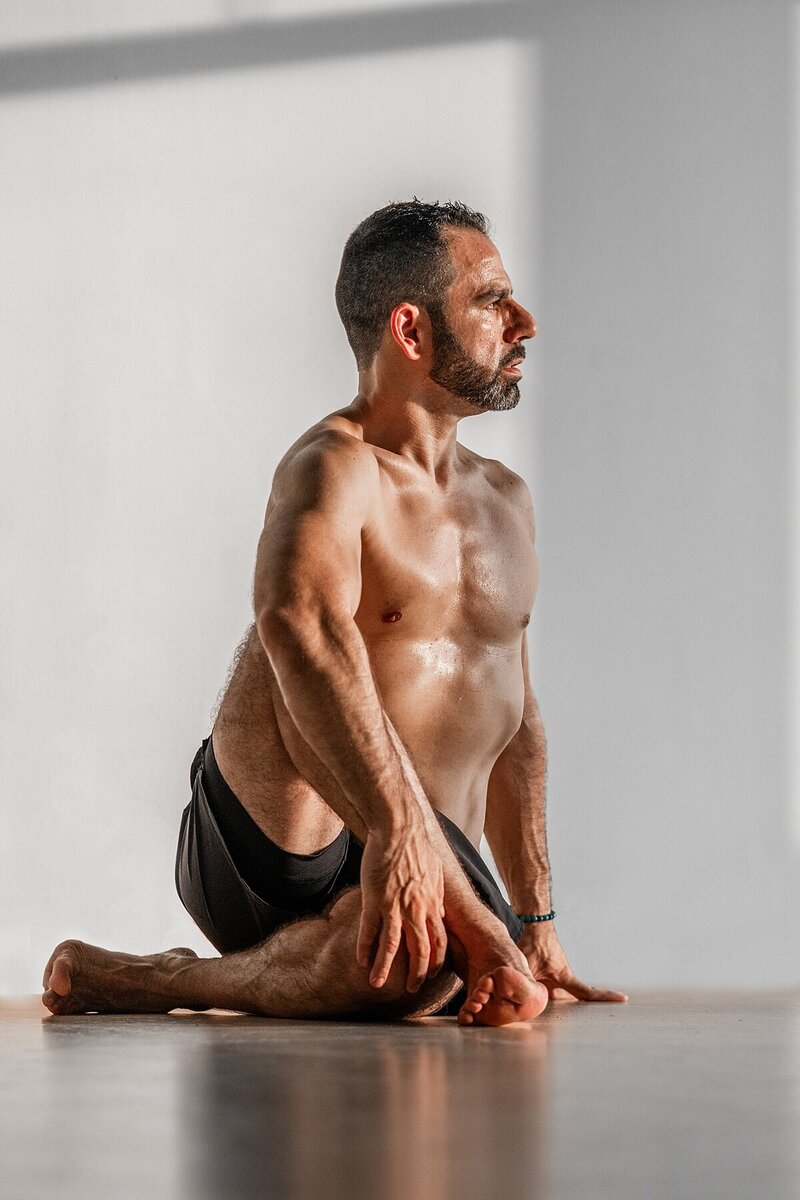
Sharon Hong
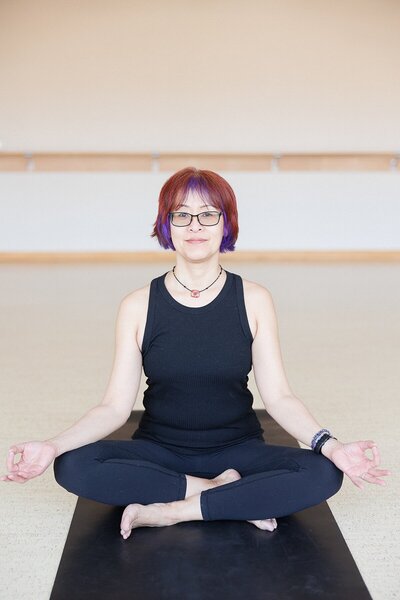
Na'or Oknin

Lori Schaer
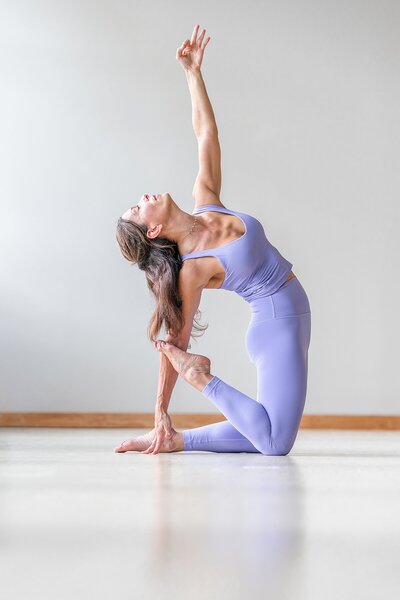
Betsy Aiello-Sanders
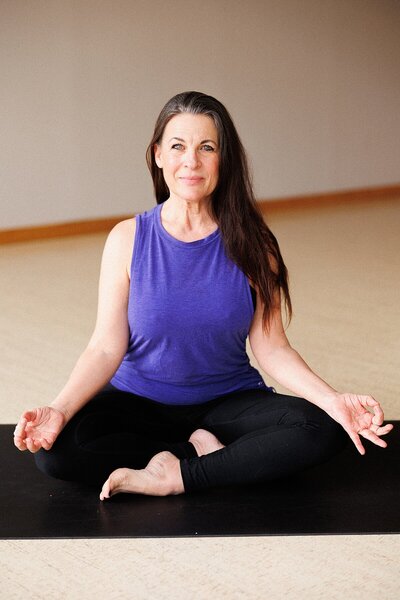
Dana Caldwell
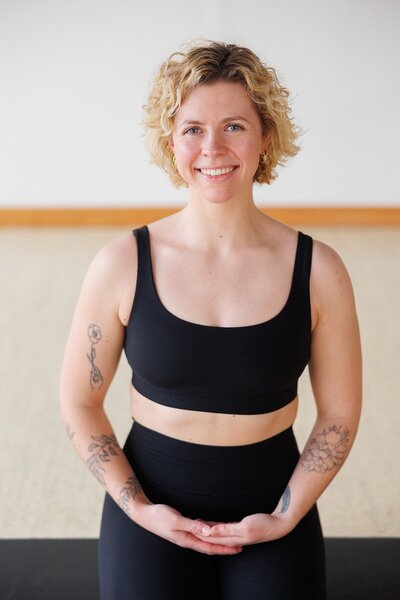
Celeste Kolodin
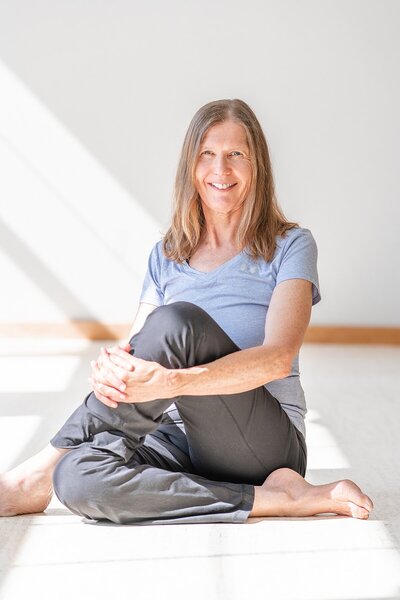
Anishka Grover

Katrina Retzlaff
Gabrielle nierenberg.
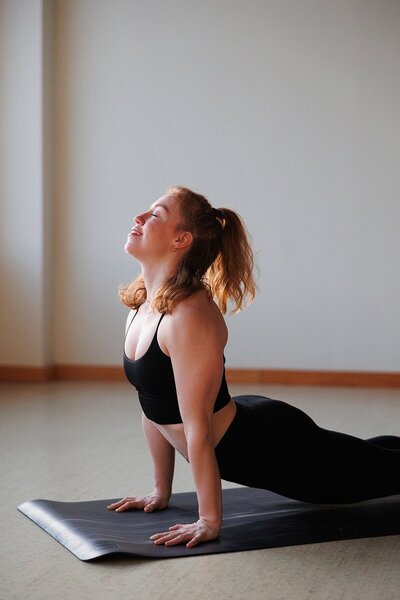
Jonathan matthew
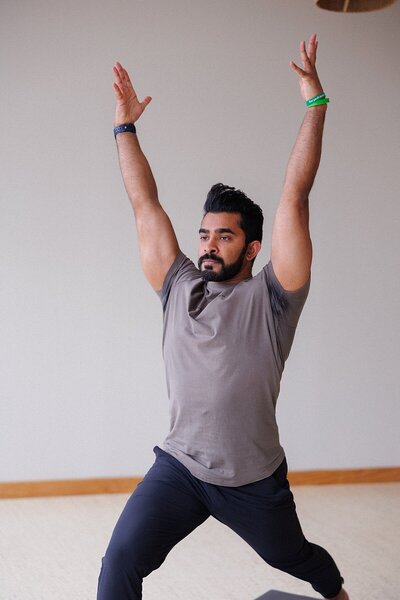
Rohini Shankar
Sarah schumacher, adrianne rowe.
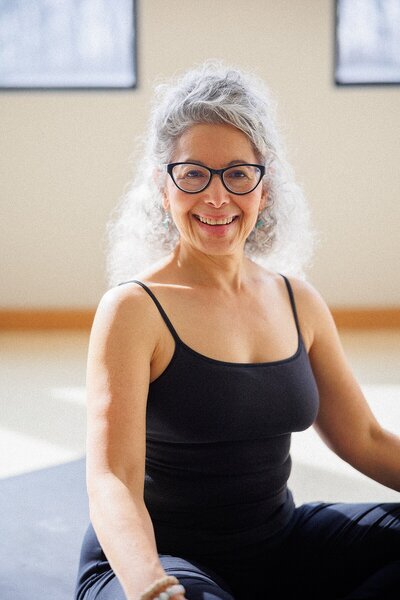
Nikki Wesen

Cristina Perea

emily pareti
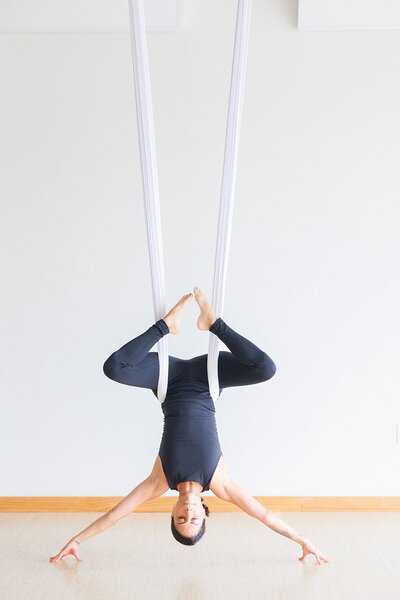
learn more about us on our blog
Have a question.
Want to see us cover a topic? Just head over to the contact page to submit a request!
search the site
© Dhyana Yoga | ALL RIGHTS RESERVED
FIND us ON INSTAGRAM
BACK TO THE TOP
- Work & Careers
- Life & Arts
Become an FT subscriber
Try unlimited access Only $1 for 4 weeks
Then $75 per month. Complete digital access to quality FT journalism on any device. Cancel anytime during your trial.
- Global news & analysis
- Expert opinion
- Special features
- FirstFT newsletter
- Videos & Podcasts
- Android & iOS app
- FT Edit app
- 10 gift articles per month
Explore more offers.
Standard digital.
- FT Digital Edition
Premium Digital
Print + premium digital, weekend print + standard digital, weekend print + premium digital.
Today's FT newspaper for easy reading on any device. This does not include ft.com or FT App access.
- Global news & analysis
- Exclusive FT analysis
- FT App on Android & iOS
- FirstFT: the day's biggest stories
- 20+ curated newsletters
- Follow topics & set alerts with myFT
- FT Videos & Podcasts
- 20 monthly gift articles to share
- Lex: FT's flagship investment column
- 15+ Premium newsletters by leading experts
- FT Digital Edition: our digitised print edition
- Weekday Print Edition
- Videos & Podcasts
- Premium newsletters
- 10 additional gift articles per month
- FT Weekend Print delivery
- Everything in Standard Digital
- Everything in Premium Digital
Essential digital access to quality FT journalism on any device. Pay a year upfront and save 20%.
- 10 monthly gift articles to share
- Everything in Print
Complete digital access to quality FT journalism with expert analysis from industry leaders. Pay a year upfront and save 20%.
Terms & Conditions apply
Explore our full range of subscriptions.
Why the ft.
See why over a million readers pay to read the Financial Times.
International Edition
- International

Trump hush money trial

Israel-Hamas war

Campus protests across the US

Tornado risk in Central US
October 5, 2022 Russia-Ukraine news
By Rhea Mogul , Sana Noor Haq, Hannah Strange, Aditi Sangal , Adrienne Vogt , Maureen Chowdhury and Mike Hayes, CNN
Ukrainian forces advance into Luhansk region for first time since conflict began, social media images show
From CNN's Tim Lister

Social media images from Wednesday showed Ukrainian troops in at least one village in the eastern Luhansk area, after crossing from the neighboring Donetsk region.
One photograph showed a Ukrainian unit kneeling and standing around a road sign at the village of Hrekivka, just inside Luhansk region.
It is the first time since the beginning of the conflict in March that Ukrainian troops have advanced into Luhansk.
More on Ukraine's advances : All of Luhansk region is claimed as Russian territory by the Kremlin, following its forcible annexation . But in recent days Ukrainian forces have been approaching the region from several directions, building on their successful offenses in Kharkiv and Donetsk.
Social media video also showed Ukrainian troops in the town of Terny in Donetsk region, about 20 kilometers (about 12 miles) from the town of Kreminna in Luhansk, which analysts believe is a critical defensive line for the Russians now that they have lost ground in both Donetsk and Kharkiv regions.
The Ukrainian advances in the northeast come within days of the so-called referendums held by pro-Russian local authorities that led to the annexation by Moscow of Donetsk and Luhansk as well as much of Zaporizhzhia and Kherson. Since the annexation measures were approved by Russian President Vladimir Putin last Friday, Russian forces have lost hundreds of square kilometers of territory in Donetsk and Kherson.
Putin says he was "pleasantly surprised" by results of referendums as Western leaders dismiss them as a "sham"
From CNN's Uliana Pavlova
Russian President Vladimir Putin said he was pleased and surprised by the results of the so-called referendums in four regions of Ukraine that have since been annexed by Russia.
“The results of the referendums, frankly speaking, not only pleased me, but also surprised me — after all, people lived in such difficult conditions, and still continue to live," Putin said during a televised meeting with Russian teachers on Wednesday. “This result, I assure you, I think the election observers know this as well, there was no desire to correct something, clean something up, add something.”
Remember: The votes are illegal under international law and have been universally dismissed as “a sham” by Ukraine and Western nations. In all four regions that have subsequently been annexed by Russia, the declared vote in favor of joining the Russian Federation was more than 90%. The “votes” – and the results that Russia and its local allies have claimed – are an important step in Russia’s faltering effort to seize control in Ukraine.
Addressing a teacher from the Donbas region, Putin said that these regions will be stabilized and developed while “helping strengthen the country as a whole."
“We always, despite the tragedy of today, have had great respect for the Ukrainian people and Ukrainian culture, and the Ukrainian language, literature, and so on,” Putin said. "We have never allowed the sort of things that Ukraine allows against Russian culture or the Russian language."
Here's a look at the state of control in Ukraine right now
Kyiv's forces continue to press forward with territorial gains in the south and east of the country, including in the regions Russia claims it is annexing .
Here's how the state of control looks right now:

Russia lacks manpower to stop Ukrainian advance in Luhansk, says correspondent embedded with Russian military
From CNN’s Mick Krever in London
The Russian military lacks the manpower necessary to hold off a further Ukrainian advance into the Luhansk region, a correspondent embedded with the Russian military in the occupied city of Svatove said on Tuesday evening.
“The Russian troops do not have enough manpower to stop the enemy attacks,” Alexander Kots, for Russian pro-government tabloid Komsomolskaya Pravda said in a video posted to Telegram. “The recent Russian losses are directly connected to that. It’s a very difficult period of time on the front line at the moment.”
He said that “we expect a serious fighting here very soon,” and that “it remains to be seen if it could stop the enemy advances.”
Kots confirmed that Russian forces were trying to fortify their defense at the line connecting the occupied cities of Kreminna and Svatova. Yuriy Podolyaka, a pro-Russian military blogger said on Monday that Russian troops had withdrawn to the Zherebets River, which runs just west of Kreminna and Svatova.
“The enemy is concentrating its forces to attack Svatove from two directions,” Kots said on Tuesday. “The enemy artillery is reaching and working over the Kreminna-Svatove road and its sabotage and reconnaissance groups can operate there. This area is being fortified by the Russian troops who dig trenches and place land mines.”
He said that Ukrainian forces are “on the high and enjoying a numeric advantage.”
“They don’t have problems with the intelligence data or high precision weapons which they are constantly using. We are just waiting for our reserves to become fighting fit and join the battle.”
Russia declines to clarify the borders of territories it claims to have annexed
From CNN's Anna Chernova and Radina Gigova

Moscow refrained from giving a concrete answer when asked how the borders of the Kherson and Zaporizhzhia regions should be defined under the Kremlin's newly-signed claimed illegal annexations.
Kremlin spokesperson Dmitry Peskov said "certain territories there are still to be returned," following rapid advances by Ukrainian forces in the south.
When asked by CNN how he would interpret the language of the laws signed by Putin earlier Wednesday, which refers to the borders of the Kherson and Zaporizhzhia regions as "the territory which existed on the day of its adoption in the Russian Federation," Peskov said: "I will leave this question unanswered."
When asked by CNN if he can provide any comment at all for better understanding, Peskov said: "You should read the decree, there is a legal wording there. On the whole, of course, we are talking about the territory in which the military-civilian administration operated at the time of its adoption (as part of the Russian Federation)."
When asked again by CNN if this should to be read as the territory captured by Russian troops as of September 30, Peskov said: "(You should stick to) what is written in the decree. But I repeat once again: Certain territories there are still to be returned, and we continue to consult with those populations that will express a desire to live with Russia."
Asked one more time by CNN whether any additional laws would be required to include those areas into the Russian Federation, or whether they would automatically be included as part of the regions under the signed laws, if and when they are “returned," Peskov said: "For now, I have nothing to add."
Russian President Vladimir Putin signed into law the documents on the illegal annexation of four Ukrainian regions on Wednesday, completing the last step of the annexation process, based on the Russian legal system. The annexation is illegal under international law.
Putin's move comes as Ukrainian forces continue to press forward with territorial gains in the south and east, including in the regions Russia claims it is annexing .
"De-occupation of Luhansk has begun," says regional Ukrainian leader
From Olga Voitovych in Kyiv
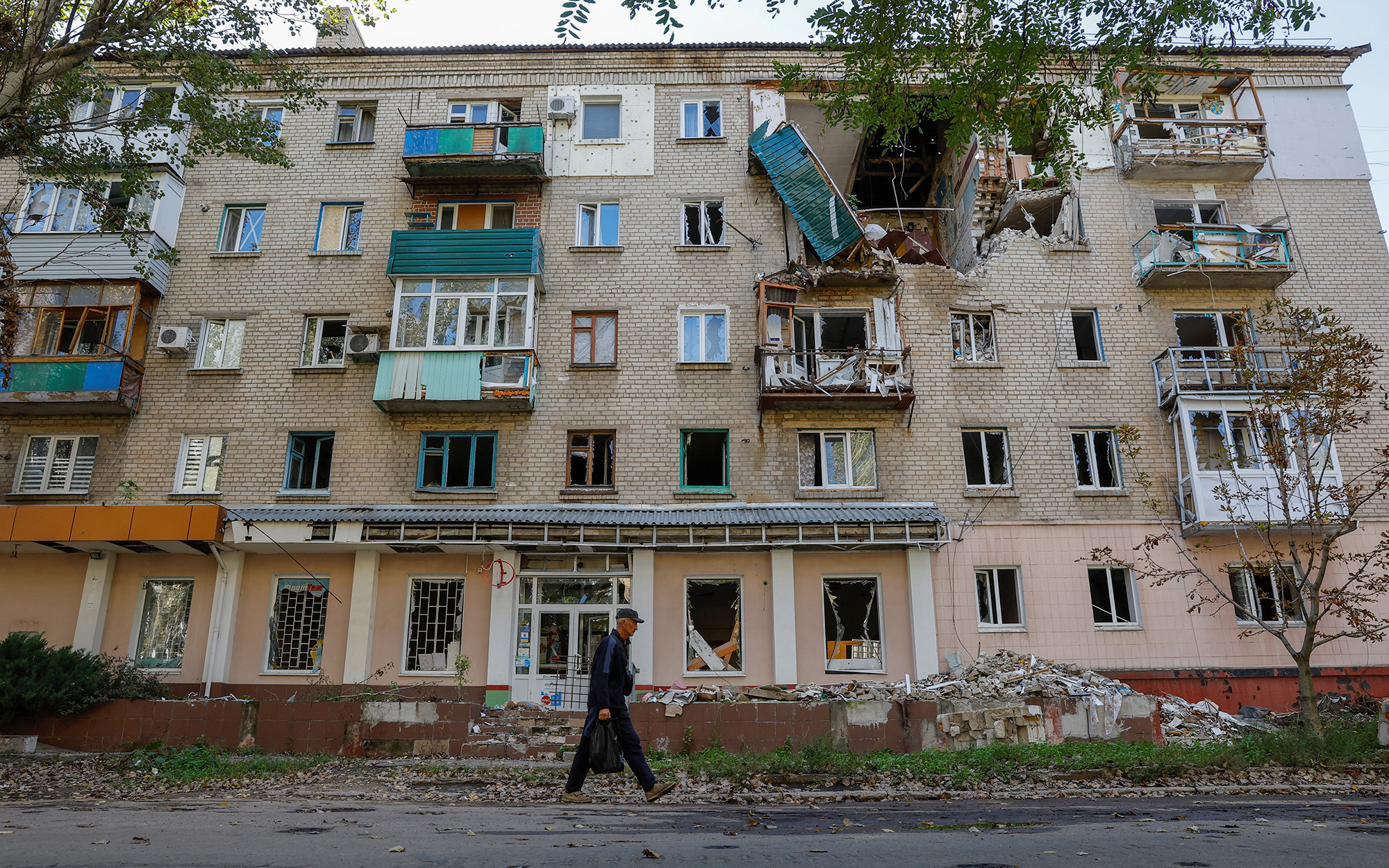
The "de-occupation" of Ukraine's eastern Luhansk region "has begun," according to a regional official.
“Several settlements have already been liberated from the Russian army, from the Russian occupiers,” Serhiy Hayday, head of the Luhansk region's Ukrainian military administration, said on national television Wednesday.
“All those soldiers realize that a counterattack is just inevitable, they are being defeated.”
After regaining the key eastern city of Lyman, in the Donetsk region, over the weekend, Ukrainian forces have continued their counteroffensive , pushing into the Luhansk region, pro-Russian officials and propagandists said on Monday.
Russia controls nearly all of Ukraine’s Luhansk region. Ukrainian forces liberated the Luhansk village of Bilohorivka at the end of September.
Hayday urged residents who fled their homes earlier this year not to try to return.
“I’d like to appeal to everyone,” he said. “First, do not get ahead of yourselves, do not rush to bring stuff and come back. We will let you know when and where exactly you can return. Because it is necessary that the Armed Forces of Ukraine move the front line further, and only then it will be possible to enter certain settlements. The territory must be demined.”
He also urged residents in occupied areas of Luhansk to try to evacuate away from the front line, or to stay in shelters.
Zelensky discusses plans for "further liberation of Ukrainian territories" with military and security staff
From Mick Krever in London
Ukrainian President Volodymyr Zelensky on Wednesday met with his top military and security staff, and considered plans for “further liberation of Ukrainian territories,” according to the president's office.
“Those present heard information from the intelligence, the headquarters of the Armed Forces of Ukraine and the commanders of the operational directions about the situation at the front and the latest actions of the enemy,” the readout of the meeting read.
“They also discussed the issue of stabilizing the situation in the newly de-occupied areas. Plans regarding further liberation of Ukrainian territories were also considered.”
The participants also “focused on the issue of countering new types of weapons used by the Russian army.”
Among those present were Defense Minister Oleksiy Reznikov, Commander-in-Chief Valerii Zaluzhny, and Head of the Main Intelligence Directorate Kyrylo Budanov.
Ukrainian forces are making gains in the east as well as in the south, where they are piercing through Moscow's defenses in the Kherson region.
Earlier Wednesday, Zelensky said that in the Kherson region the towns of Liubymivka, Khreshchenivka, Zolota Balka, Biliaiivka, Ukraiinka, Velyka, Mala Oleksandrivka and Davydiv Brid had all been liberated, “and this is not a complete list.”
Kherson is one of the four regions in Ukraine that Russia has announced it is annexing , in violation of international law.
It's 2 p.m. in Kyiv. Here's what you need to know
From CNN staff
Russian President Vladimir Putin has signed into law measures that claim to annex four Ukrainian regions, in violation of international law.
Ukrainian forces have gained ground in the south, pushing even further toward the Russian-occupied city of Kherson.
Here are the latest developments:
- Kremlin signs illegal annexations: Putin signed into law measures that claim to illegally annex the four Ukrainian regions of Donetsk, Luhansk, Zaporizhzhia and Kherson into the Russian Federation. He also designated "acting heads" of four illegally annexed Ukrainian regions, according to Russian state news agency TASS. The four newly appointed leaders will govern until official heads for the regions are elected in accordance with Russian law, TASS reported Wednesday.
- Kyiv sweeps the south: The Ukrainian military has liberated multiple towns in the southern Kherson region as part of "the ongoing defensive operation," according to President Volodymyr Zelensky. Meanwhile, Russian troops are leaving mines in southern Ukrainian villages as they retreat along the western bank of the Dnieper River, the Ukrainian military said on Wednesday.
- Western allies bolster support for Ukraine: US President Joe Biden and Vice President Kamala Harris spoke with Ukrainian President Volodymyr Zelensky Tuesday and said the US "will never recognize Russia's annexations." European Union member states have also agreed on a fresh round of sanctions against Russia, the Czech Presidency of the EU Council announced Wednesday. The EU's eighth package of sanctions against Russia -- which was proposed by the European Commission last week -- will include an oil price cap, among other measures.
- Zelensky proposes "special tribunal" for Russian leaders: Zelensky on Wednesday called for the creation of a “special tribunal” to pursue Russian political and military leaders for their role in the invasion of Ukraine. “We must bring to justice those whose decisions started all this,” he told a conference in Paris .
- Miss Crimea fined for singing Ukrainian song: The winner of Miss Crimea 2022, Olga Valeeva, has been fined 40,000 Russian rubles ($680) by occupying Russian authorities for singing a patriotic Ukrainian song, according to Russian state media and pro-Russia regional authorities. Olga Valeeva was spared a jail sentence because she has young children, Russian state news agency TASS reported. A friend who sang with her was sentenced to 10 days in detention.

Journalist who held anti-war poster on Russian state TV confirms she has abandoned house arrest
From CNN’s Mick Krever in London. Translation by Olly Racz.
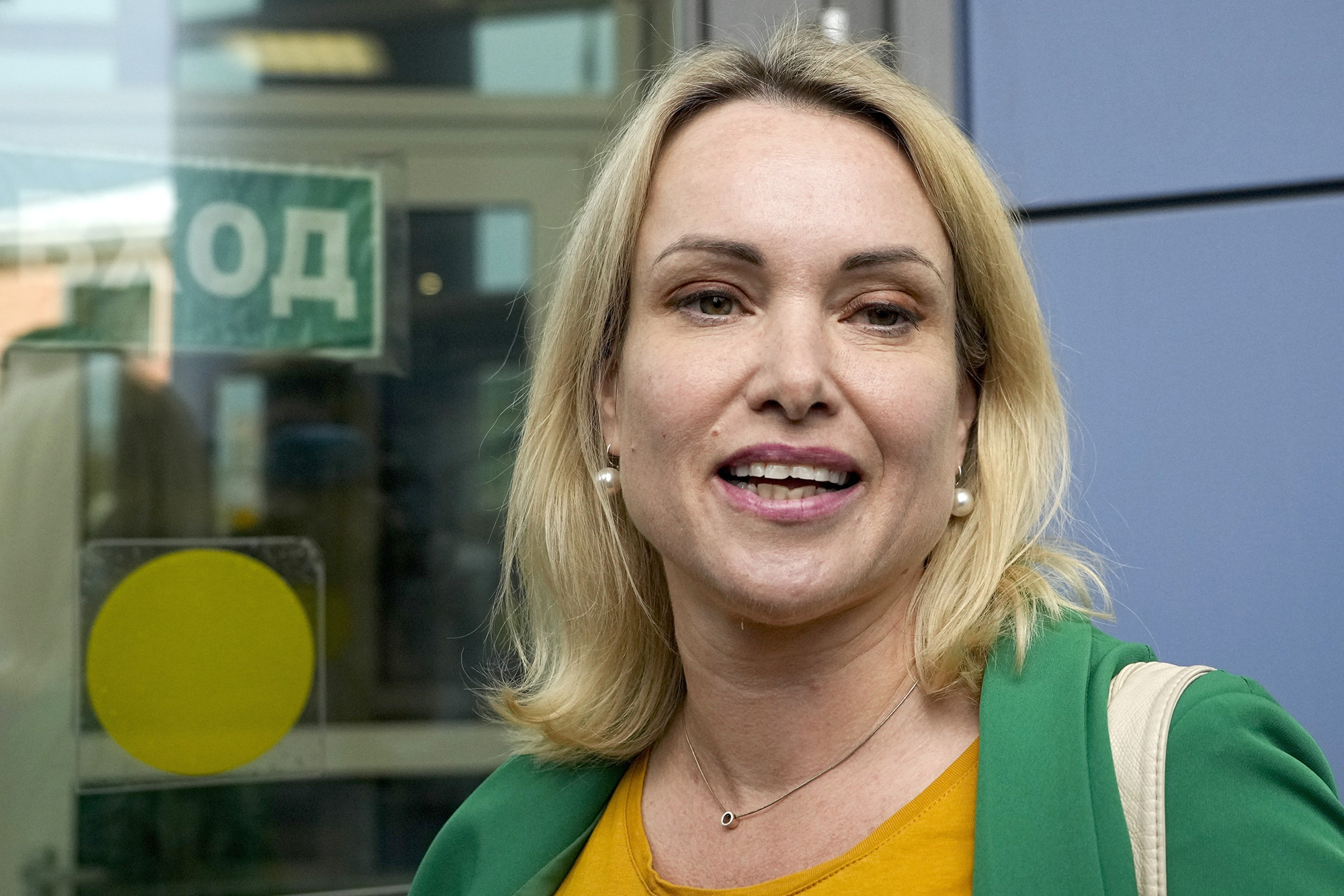
Marina Ovsyannikova, the Russian journalist who held up an anti-war poster on Russian state TV, has confirmed that she has left her court-ordered house arrest.
“I consider myself absolutely not guilty and because of our country's refusal to execute its own laws, I refuse as of 30 September 2022 to observe my pre-trial restriction in a form of a house arrest and I free myself from all that,” Ovsyannikova said in a statement on her Telegram channel.
A court in August placed her under house arrest until October 9, charging her with disseminating false information about the Russian Armed Forces, TASS reported.
Ovsyannikova, a former employee of Russia Channel One, interrupted a broadcast in March holding up a sign that read: "NO WAR. Stop the war. Do not believe propaganda they tell you lies here.”
At the time, Ovsyannikova told CNN’s Christiane Amanpour that many Russian journalists see a disconnect between reality and what is presented on the country’s television channels, saying "it was simply impossible to stay silent.”
“Dear law enforcers, please put this type of bracelet on Putin as it’s he who should be isolated from society and not me. Putin should be put on trial for the genocide against the people of Ukraine and mass murder of Russia’s male population," Ovsyannikova said in a separate video on Telegram on Wednesday while pointing to a monitoring bracelet on her ankle.
Russia’s military leadership has “no idea about the number of victims among the civilian population” in Ukraine," Ovsyannikova added.
“Мaybe some judge's, prosecutor's or investigator's conscience will wake up and they will stop calling the children who died in Ukraine fakes,” she said. “And they will stop prosecuting me for telling the truth.”
“I've spent almost two months under house arrest," she continued, adding that the whole time investigators have been referring to the words of Defense Minister Sergei Shoigu and his spokesperson Major-General Igor Konashenkov, "trying to pretend that not a single child died during the war in Ukraine.”
Please enable JavaScript for a better experience.

Frequently asked questions
Got questions i have answers, for more information about my teaching approach and styles, please visit yoga practice page., want to know more, feel free to contact me.
Wear comfortable clothes that helps you stretch and practice without having to fix clothing while being in an asana (posture).
Bring everything you need for your yoga practice – yoga mat, props like (blocks, blankets, strap) if you intend to use, water bottle.
No. We can always start your practice with Yoga Basics and progress from beginner to advanced gradually.
You listen to your body and take rest. This is the beauty of yoga practice, the intention is to be stronger and flexible by being in tune with our own self.
You can practice anytime. The morning is a great time to practice; you wake up stiff from the night, so opening up your body with some yoga sets you up nicely for the day. In the evening, yoga can be a nice way to de-stress and unwind. In the afternoon it can be a great way to release fatigue and re-energize. Basically, it comes down to whenever you can fit yoga in, that’s the right time for you!
You should have an empty stomach during a yoga session, so have at least 2 hours between a main meal and yoga. Digestion of food requires energy and when you do yoga after a meal, your energy goes to the muscles you are exercising, and the body can’t digest the food properly. It is not healthy and won’t feel good to practice yoga on a full stomach. If this is difficult, a cup of tea/coffee/milk or nuts may be taken before practice.
Please contact me with your details and goals.
Yes. You can. As a rule of thumb – anyone who can breathe, can do yoga!
Yes. Yoga is beyond asanas (postures). We can always modify and formulate what works for your needs. Mudras, Pranayama (Breath work), Meditation, yoga gives us many tools that one can apply based on their needs.
Many people practice yoga as a way to manage their health conditions. There are many different types of practice which suits different health needs and can also be adapted and modified for injuries. However, if you have medical condition or an injury, you should consult a medical practitioner before starting any exercise including yoga.
First of all, consult your doctor. You should consult a medical practitioner before attempting any exercise including yoga, to ensure that you do not injure yourself. If you have never done yoga before, the general recommendation is to not start during the first three months of pregnancy, since your body isn’t used to it. If you are a regular practitioner, you can continue by choosing the appropriate style of practice.
Thank You! Your message has been sent successfully.

IMAGES
VIDEO
COMMENTS
Build your yoga foundation, deepen your yoga understanding or get on the path of being a yoga teacher - my training programs are designed to help you fulfill your calling. All programs are based on traditional yoga. Dhyana Yoga Journey is RYS (Yoga Alliance approved) and certified teachers will be RYTs.
This journey to the self by using breath as an anchor to unite our physical, mental and spiritual layers, bringing peace and clarity within is yoga. Yoga teaches us self-discipline and gives us various tools - asanas (physical postures), pranayama (breath exercise), dhyana (meditation), mudras and bandhas (energy seals) to align our entire ...
Conclusion. Dhyana, the 7th limb of yoga, is a powerful realm that transcends the mere act of meditation. It serves as both a journey and a destination, a state where the mind is simultaneously fully alert and profoundly at peace. This confluence of heightened awareness, emotional equilibrium, and holistic well-being marks Dhyana as one of the ...
Dhyana Yoga Journey, Plano, Texas. 1,049 likes. Dhyana Yoga Journey is my vision to cultivate a healthy body, quiet mind, open heart and a vibrant spirit through mindful modalities of yoga. ~ shefali
As the urge of making a difference outside of binary world was getting stronger, opportunity came my way and I plunged into action. In 2016, opened a Holistic Yoga Center, Dhyana Yoga Center, in Plano, a platform to bring all the yoga and healing modalities together to bring focus on the well-being. Keeping the momentum going for 3 years in the ...
As we advance through the stages of the eight limbs of yoga, we come to the seventh limb called dhyana. Often, dhyana is used interchangeably with the practice of meditation. There is, however, a distinct difference between meditation as a practice and the state of being that is dhyana.The Journey of MeditationMeditati
For dhyana yoga, you can do slow and deep yoga breathing exercises like alternate-nostril breathing (Anulom-Vilom) and Bhramari Pranayama. When doing these pranayamas, firstly connect with the natural cycles of your breath and bring your awareness to it. ... Beginning your yogic journey through these limbs of Yoga is a challenging but worth ...
2 reviews and 2 photos of DHYANA YOGA JOURNEY "I took my 200 RYT training at Dhyana. My teachers Anju and Peggy were amazing! I LOVED this class and miss it terribly now that it is complete & I am a certified teacher. They cover not only the technicalities of the poses but also the other areas of yoga so often overlooked by western teachers. I learned about Sanskrit, the Gita, Ayurveda ...
How to Practice Dhyana: A Guide to the Seventh Limb of Yoga. Written by MasterClass. Last updated: Jun 7, 2021 • 4 min read. Dhyana yoga is a meditation method that can help you to experience a deeper awareness of your consciousness.
Concentration and contemplation. Although Dhyana sounds and seems similar to Dharana (the preceding limb of the Eight Limbs of Yoga), it is subtly different.While Dharana teaches us a one-pointed focus, encouraging us to concentrate all of our attention onto the breath, or a sound, or a visualisation, Dhyana brings about keen awareness without the focus.
Introduction to Dhyana in Yoga. Yoga is an ancient practice originated in India that helps us feel the best in our body, mind, and soul. Among all the styles of yoga, there is a unique type called Ashtanga Yoga.Ashtanga Yoga refers to the eightfold path of yoga described by the Sage Patanjali. One should follow these steps to align all aspects of life.
Yoga helps us return to our natural state of being—a state of "no effort.". When you access dhyana you reach a state of heightened presence, where certain mental constructs such as time, ambition, and opposition cease to exist. When we peel back social norms and cultural conditioning, we find the underlying truth of the nature of the life ...
Dhyana Yoga Journey in Plano, TX is a renowned yoga center that offers a transformative journey towards self-growth and well-being. Led by Shefali, an experienced and compassionate instructor, their yoga practice focuses on cultivating a healthy body, quiet mind, open heart, and vibrant spirit. With a range of classes, workshops, and wellness ...
Dhyana Yoga Journey is founded on the principles of traditional path of yoga where practice is not limited to physical level. Offering a comprehensive yoga training program that is crafted for both seasoned and aspiring teachers, as well as for dedicated students who wish to deepen their practice and further their understanding of yoga. ...
Dhyana Yoga Journey. Opens at 4:30 PM (972) 750-1419. Website. More. Directions Advertisement. 3131 Custer Rd ... Yoga. Own this business? Claim it. See a problem? Let us know. You might also like. Massage parlor, Custom and orthopedic shoes. Foot Joy massage. 11. Foot Joy is amazing! Anna, is new there and is the most gifted therapist I have ...
At Dhyana Yoga Studio, we believe that yoga inspires continuous growth and change necessary for our wellbeing. ... We invite you to be a part of our offering toward this journey of continuous growth, where each yoga practice brings you closer to a feeling of wholeness. Mission statement and core values. Dhyana Yoga. Check out our full schedule ...
Sergei Shoigu, Russia's defence minister, reported to Putin on Sunday that Russia's forces had "liberated" the whole of the region after capturing Lysychansk, Ukraine's last stronghold ...
Social media images from Wednesday showed Ukrainian troops in at least one village in the eastern Luhansk area, after crossing from the neighboring Donetsk region.
Hłowna strona; Korčma; Aktualne změny; Připadny nastawk; Pomoc; Darić
As we all are unique so are our needs. I custom design sessions based on your needs. Here are some of my programs. Stretches to awaken your muscles - Chair Yoga - Yoga for Healthy Back. Anti-Sitting Mobility Routine - Fostering Mindfulness - Guided Meditation. Relax and Rejuvenate - Anxiety Relief Routine - De-stressing Routine.
Luhansk has both the highest and lowest temperature recorded in Ukraine. A record high of 42.0 °C (107.6 °F) was recorded on 12 August 2010, which is the highest temperature to have ever been recorded in Ukraine. [25] [26] A record low of −41.9 °C (−43.4 °F) was recorded on 8 January 1935.
Yoga Fit is where you can find balance, harmony and energy renewal amidst the hectic bustle of everyday pressures and deadlines. Relax & enjoy a personalized day spa experience in our comfortable sanctuary. Mary Sheldon Yoga Director. Etiam eu molestie eros, commodo hendrerit sapien. Maecenas tempus leo ac nisi iaculis porta.
You can practice anytime. The morning is a great time to practice; you wake up stiff from the night, so opening up your body with some yoga sets you up nicely for the day. In the evening, yoga can be a nice way to de-stress and unwind. In the afternoon it can be a great way to release fatigue and re-energize.